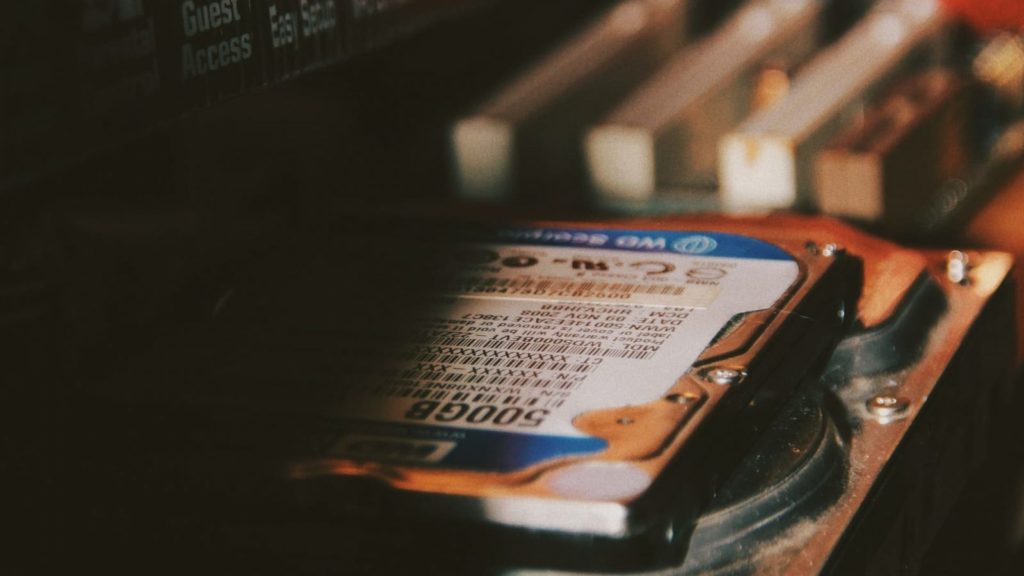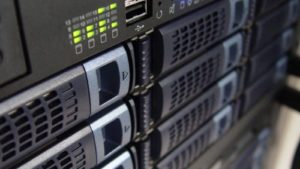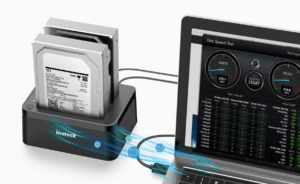Choosing the right external hard drive is an important point. Because depending on the area of application and purpose, a different hard drive is recommended, since each individual device has different advantages and disadvantages. For example, if you want to access data on the go, we recommend a small and very light hard drive. However, if you only work from home and only make backups here, a completely different hard drive is suitable. The transmission rate and the size of the memory play an important role here.
In the following you will find our recommendations as well as a small checklist for the purchase of a suitable external hard drive. So you can be sure that you are buying the right device for your purpose and do not necessarily have to make use of the right of exchange.
All important key figures at a glance
Memory size
The memory size differs depending on the manufacturer and hard drive. There are often several variants of every external hard drive available. The sizes currently range from 120 gigabytes up to 5 Terabyte. If you often want to save very large files, it is better to use a hard drive with more than 1 terabyte of memory, since very small hard drives can quickly reach their storage limit after just 2-3 larger files.
cache
The cache of a hard disk refers to the buffer in which files are buffered during write or read access. In a normal working process, all files are first moved to the temporary storage and then written to the target storage. The purpose of this is to increase the data transmission rate and the latency, i.e. the delay in the Data transmission to reduce. The larger the cache, the higher the data transfer rate, since much larger amounts of data can be cached.
RPM / revolutions
The RPM (rounds per minute), i.e. the revolutions of a hard disk within one minute, decisively determines the working speed of an external hard disk. The faster the magnetic disk contained in the hard drive rotates, the faster the hard drive can access data. If you have to access files on your external hard drive very often, we recommend a hard drive with a RPM from 7200+, since access is very fast compared to a hard disk with 5400 revolutions per minute.
Connection
Which connection is the right one depends entirely on the system of the user. One external hard drive with USB 3.0 connection is only recommended, for example, if it is also supported by the system used. If this is not the case, a USB 2.0 hard drive can also be used. external hard drives with a Thunderbolt connection are also exclusively included Hard Drives for Mac PCs are used because such a connection is not available for Windows systems. Before buying a hard disk, every user should therefore find out whether the existing connection on the hard disk can be connected to the respective application device at all.
Data transmission
USB 2.0 or USB 3.0?
In general, the question here is which connection options the target system supports. Although is USB 3.0 backwards compatible in almost all cases, but in most cases the transfer rate is only slightly above that of USB 2.0. With many hard drives, the price of a USB 3.0 variant is only slightly higher, and almost all newly manufactured models have the current USB 3.0 standard.
A direct comparison cannot be drawn here, since the transfer rate differs depending on the target system and the components used within the hard disk housing. However, if you have the money for a USB 3.0 hard drive, you should invest accordingly.
The purchase recommendation on our part therefore clearly goes to hard drives with a USB 3.0 connection!
What working speed is recommended?
The rotational speed of the hard disk varies depending on the application.
- 5400 rpm
External hard drives with a speed of 5400 rpm are recommended for those who only use their hard drive from time to time to save a few data, but don't access it too often. - 7200 rpm +
Recommended for anyone who accesses their files frequently. If you also boot an operating system from an external hard drive, you should also use a hard drive with a high rotational speed, since the boot process is much faster here.
purposes
Hard drives for outdoor use
If you are often on the road and need to save data there, we recommend special ones outdoor hard drives. These have a special coating and are equipped with anti-shock technology, so that the data can also be stored safely on the go. Smaller falls don't bother the hard drive, and the special coating means that small scratches and dents can also be avoided.
Such hard drives are recommended, for example, for outdoor photographers, geocachers and trekking trips.
Disks for media application
If you want to use your hard drive to play media, you should consider a few important points. On the one hand, of course, the size of the memory, since films in particular often take up a lot of memory and if the memory size is too small, there could already be no more memory available. It is therefore advisable to only use hard disks with 2TB + storage to use. In addition, the working speed of the hard disk should be 7200 rpm to avoid stuttering during playback. The cache size of the hard disk should also be at least 32 MB to enable the media to be played as smoothly as possible. Depending on which end device the hard drive is to be connected to, the type of connection is also a very important detail. For example, many televisions support the connection of an external hard drive, but only with a USB connection, but not with a Firewire or SATA connection.
Hard drives as backup data carriers
If you frequently perform system backups, you should pay particular attention to a fast connection and the size of the storage capacity. On the one hand to enable fast transfer of the backup and on the other hand to have enough storage space for the backups. Because it often happens that not only one backup, but also a larger number of older backups should be saved. Cache size and rotational speed only play a subordinate role here, since such data is normally only accessed extremely rarely.
Power-saving hard drives
Saving energy is becoming a popular trend. If you also want to use an energy-saving model for your external hard drive, we generally recommend one for the time being 2,5 inch hard drive. These are usually supplied with power via a USB connection and are compared to 3,5 inch hard drives very energy efficient. In addition, many manufacturers offer special software that puts the hard drive in an energy-saving state when it is not working. Such a solution offers, for example Verbatim with their “Green Button” software.







